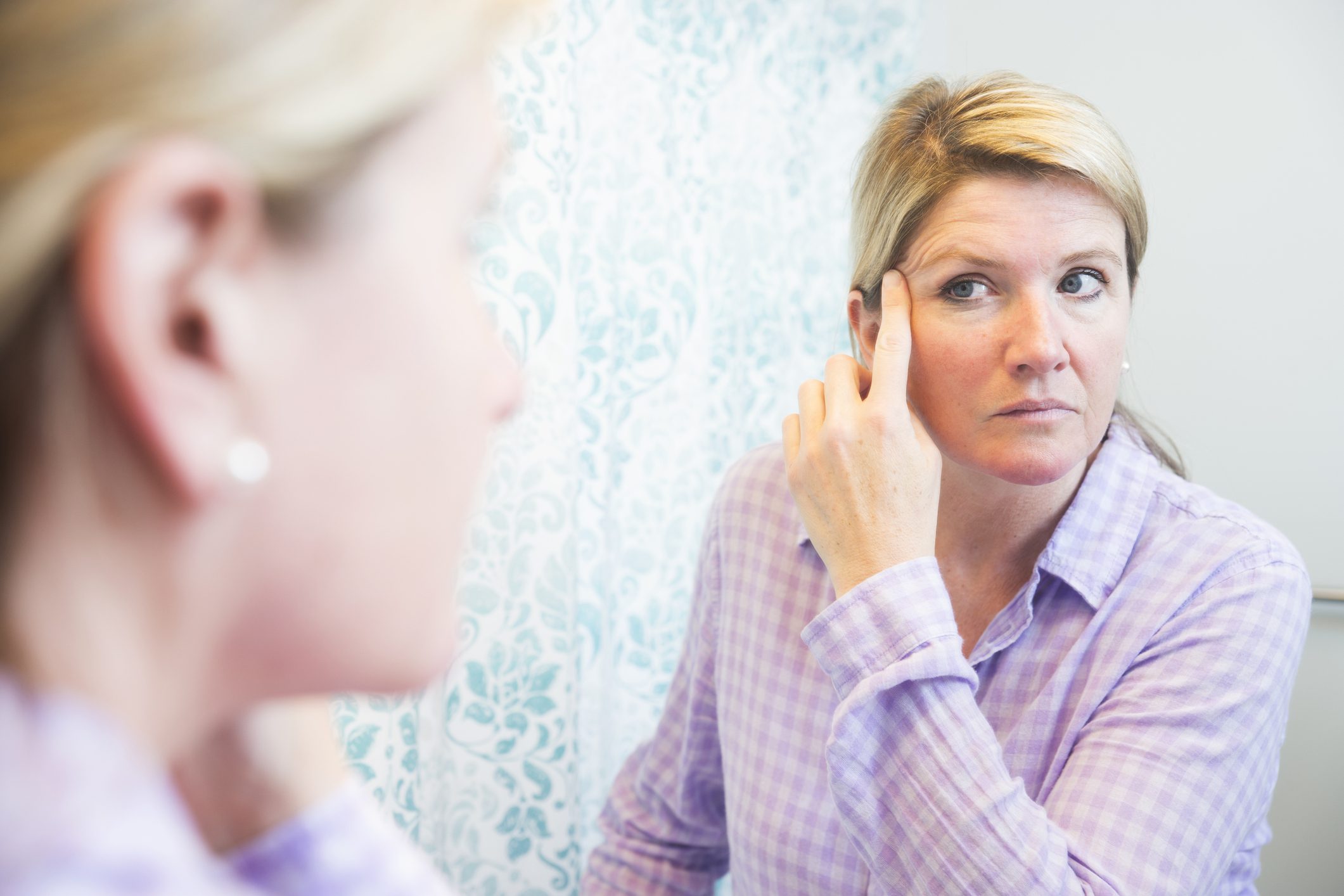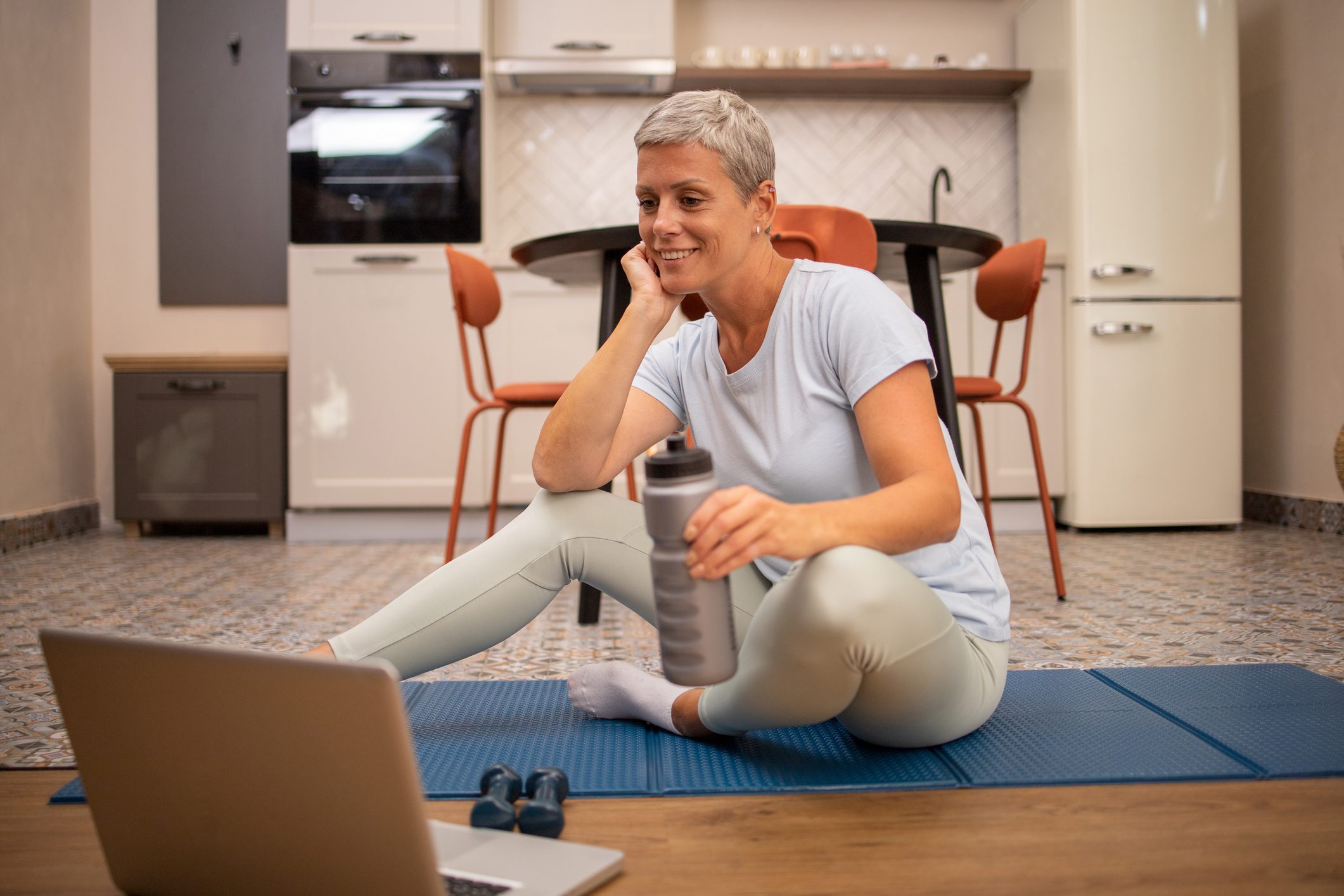Every woman knows the stereotypes are bunk. Women are a lot tougher than men, especially when it comes to being sick. You’ve never known the misery of a man who has a mild headache!
Jokes aside, though, women typically have to handle a lot more than men do when it comes to illness. An astonishing 80% of patients diagnosed with autoimmune diseases are women,1 and we are more than twice as likely as men to report physical manifestations of stress like GI issues or sleep troubles.2
Then there’s the aftermath of disease that women are more likely to deal with. Many types of cancer diagnoses are about equally split between sex—but men are over six times more likely than women to abandon their partner following a fatal diagnosis, compounding the pain and isolation that illness can bring.3
What’s the reasoning behind these disparities? Researchers are still trying to get to the bottom of that. But they have theorized about some of the factors that could be contributing to women bearing the brunt of many illnesses.
Let’s take a look at some of them:
The X Chromosome
The Y chromosome is what separates us—men inherit one copy of the Y chromosome from their fathers and one X from their mothers. Women inherit two X chromosomes, one from each parent. Recent research has explored the idea that it’s women’s X from their father that determines a higher risk for autoimmune disease.4
This is because certain genes related to autoimmune diseases are located on the X chromosome. (It’s important to note that not all autoimmune diseases are influenced by the X chromosome, and other factors such as hormonal and environmental factors also play a role.)
Researchers aren’t sure exactly why this is, but think it could be a result of the body’s imbalanced immune response to the inactivation of one of the X chromosomes while it’s still an embryo.
More studies are needed to solidify this theory, but many experts are hopeful that learning more about it could help them find new ways to treat autoimmune issues.
Women’s Strong Immune Response
You’re not imagining it. Women and men have different immune systems—and a woman’s immune system typically has a stronger response to offenders than a man’s does.5 There are several theories as for why this is, ranging from it being an evolutionary advantage for procreating to estrogen playing a strong role in immunity.6
In theory, a stronger immune system sounds great, right? And it can be. The same study that proved women have a stronger immune response also found this advantage helped improve their vaccine efficacy compared to men and helped them more efficiently fight off acute infections.5
Unfortunately, an outsized immune response is also what contributes to autoimmune disease. Your immune system mistakenly attacks what it thinks are harmful invaders, but may very well be the bacteria, cells, or tissues that you need to feel like yourself.
So when a woman’s strong immune system goes to bat against a real offender, it’s great. But it could also be a reason that they’re more susceptible to autoimmune disease.
Stress
I don’t think this will come as a shock to most women, but we’re more stressed than men. Spelling out all the reasons why could be a whole different article, but factors like a wage gap,7 more paths to burnout at work,8 and an uneven caretaking burden (exacerbated further by the pandemic)9 are strong factors.
What does that have to do with chronic illness? Everything. Stress is not just in your head—it takes a very physical toll on every aspect of your health.
Stress can cause or exacerbate a lack of sleep, which can lead to the development of chronic conditions like type 2 diabetes and cardiovascular disease. Inconsistent sleep can also impact your metabolism, making it tougher to maintain the weight you want—and obesity is another risk factor for chronic illness.
Plus, stress is linked to autoimmune conditions. One study found that people with a stress-related disorder were more likely to be diagnosed with an autoimmune disease,10 and reducing stress levels in patients already diagnosed with autoimmune disease led to better outcomes.11
The connection between stress and autoimmune issues needs further examination, but experts believe that both genetic and environmental factors create a cascade of events that result in a disease. One message is crystal clear, at least: reduce stress, and your body will thank you.
I can hear what you’re saying—that you just can’t eliminate all your stress! Fair enough. But one thing you can do is take a supplement that will help manage your body’s response to it. A neurotransmitter called GABA is your ally here. GABA imbalances are linked to anxiety, but with regulated levels, you’ll be better equipped to calmly handle stress.
I like knowing I have access to GABA when I need it, so I put it in Take Ten Stress Support. In this supplement, GABA works alongside other calming agents kind of like that good angel on your shoulder—reminding you to take a breath, evaluate the situation, and come up with a solution without ever letting stress get the better of you.
There’s another element of stress that can complicate treating disease as a woman—the way we’re treated at the doctor’s office. Ever head into a medical appointment hoping to find answers, only to get brushed aside or told you’re fine?
You’re not alone.
You or your friends may all have your own stories about experiences like this, but the data backs it up, too. Researchers have found that women—especially women of color—are more likely to face longer wait times in the ER with abdominal or chest pain than men with the same symptoms.12,13 Another study found that women were twice as likely as men to be diagnosed with a mental illness when showing signs of heart disease.14
Women of color are also underrepresented in clinical research, which means physicians may not be learning enough about conditions that disproportionately affect them, or they may be differently impacted from certain medications that have been predominately tested on white people.15
One study attempted to document racial bias in the doctor’s office. It found that Black people were more than twice as likely as white patients to have a negative descriptor written about them in their medical charts, a disparity that could lead to poorer quality of care.16
What does this medical bias do to us? Causes even more stress and sets off a vicious cycle. Try to combat this by understanding it’s a systemic issue, not a true dismissal of your symptoms, and looking for a doctor who actually takes time to listen to and address your needs.
Combatting Your Risk of Chronic Illness
Along with decreasing stress, there are a few diet and lifestyle decisions you can make to combat the higher risk of chronic illness and autoimmune issues. Check them out:
Dial Down Inflammation
It’s never a bad idea to take charge of chronic inflammation. It is so damaging to your health over time that some researchers have labeled it the etiology, or the cause, of several diseases that collectively represent the top killers worldwide.
Debilitating diseases including cardiovascular disease, cancer, chronic kidney disease, neurogenerative disorders, and of course, autoimmune disease can all stem from inflammation.11
That’s why it’s especially important to take steps that dial down your inflammation if you have autoimmune issues.
One great way to do that? Move your body. I’ve worked with some clients who believe that exercise would only exacerbate their symptoms, but researchers have found that exercise can lower your body’s inflammatory response, making it a great therapeutic tool for many types of autoimmune disease.12
Plus, exercise lowers stress by slowing down the release of your stress hormones while simultaneously boosting the hormones that elevate your mood.13 And what’s a trigger for autoimmune flareups? Stress. By getting in daily movement, you can decrease inflammation and feel good about yourself, kickstarting a cycle that will make it easier to keep making smart decisions that positively impact your health.
You have another tool in your arsenal to combat inflammation—your diet. I’ve gathered my favorite foods to fight inflammation here (and added the worst foods to eat with autoimmune disease here).
The biggest step you can take today to adapt your diet to an autoimmune issue is find out if you have any hidden food intolerances. Common offenders like gluten, soy, corn, and dairy could be responsible not just for uncomfortable GI symptoms, but for triggering your immune system to go on the attack and flare up your disease.
If you haven’t done The Virgin Diet, now is the time. It’s a three-week program where I walk you through eliminating and mindfully reintroducing common foods. You’ll be able to see firsthand if any of them are making it harder for you to lose weight and easier for your autoimmune disease to thrive. Everyone is different—a meal that hits the spot for someone else might be harming you, and this cleanse is the way to figure out the ingredients that make you look and feel fantastic.
Learn How to Spot Health Issues in Women
When you think about a few common symptoms of a heart attack, chest pain and arm numbness are probably the first symptoms to come to mind.
You’re right—when it comes to heart attacks in men. And while women can certainly experience those, too, did you know there are a few symptoms that typically only show up in women? Jaw pain and sudden nausea or vomiting are two signs of heart attacks in women that too often go overlooked, since we’re typically only taught about the symptoms that are more common in men.
Other illnesses, like Hashimoto’s thyroid disease, are more likely to affect women than men—but we’ll chalk up symptoms like fatigue, weight gain, dry skin, or cold sensitivity as “normal” signs of stress or aging.
You don’t have to live with feeling a bit “off,” or gaining weight out of nowhere. If you start to have symptoms you don’t like (or hear a friend talk about theirs), remind yourselves that spotting under-the-radar signs of illness and getting them checked out could save a life.
And when you do get yourself checked out, remember that you have to be your own best advocate. As we’ve learned, some doctors might take you less seriously than they do men—and even the best of physicians only have so much time to learn about you. Come prepared with relevant data, like your suspicions about a possible diagnosis, key points from your medical and family history, a list of the medications or supplements you take, and specific information about the symptoms that are bothering you (for instance, noting that you’re extra fatigued on days you work out, or you never used to experience nausea after certain foods but now you are).
If you get pushback from a doctor who tells you you’re fine when you just know you’re not, try to get an appointment with another professional. I know it’s annoying, and may be difficult depending on your location and insurance, but remember that you deserve to be listened to and treated with respect when dealing with your health.
Take Care of Yourself
Sounds cheesy, but it’s true. Women bear unequal burdens of looking out for all the people in their lives, often at the expense of their own sleep, stress levels, and overall health.
Just remember that it’s the opposite of selfish to prioritize your own health. If you aren’t operating at your peak capacity, you can’t show up for anyone else in the way you want to. Do what you have to do to find time to exercise, get quality sleep, enjoy a nutritious diet, and treat your body with the respect it deserves. You may be surprised to learn how much this step helps relieve the symptoms of autoimmune disease, and set you up for continuing to help yourself and others in the years to come.
Having trouble knowing where to start improving your health? Rather than tackling it all at once with unsustainable changes, my Ultimate Health Roadmap breaks the journey down into small, manageable steps that will make a giant impact on your health without disrupting it at all. You’d never set yourself up for failure by heading out on a road trip without the directions! So don’t do it when it comes to your health journey, either. Get your personal roadmap today.*
*These statements have not been evaluated by the Food & Drug Administration. Products mentioned are not intended to diagnose, treat, cure, or prevent any disease. The views in this blog by JJ Virgin should never be used as a substitute for professional medical advice. Please work with a healthcare practitioner concerning any medical problem or concern.
Sources
- Angum, F., Khan, T., Kaler, J., Siddiqui, L., & Hussain, A. (2020). The Prevalence of Autoimmune Disorders in Women: A Narrative Review. Cureus, 12(5), e8094. https://doi.org/10.7759/cureus.8094
- Remes, O., Brayne, C., van der Linde, R., & Lafortune, L. (2016). A systematic review of reviews on the prevalence of anxiety disorders in adult populations. Brain and behavior, 6(7), e00497. https://doi.org/10.1002/brb3.497
- Glantz, M. J., Chamberlain, M. C., Liu, Q., Hsieh, C. C., Edwards, K. R., Van Horn, A., & Recht, L. (2009). Gender disparity in the rate of partner abandonment in patients with serious medical illness. Cancer, 115(22), 5237–5242. https://doi.org/10.1002/cncr.24577
- Miquel, C. H., Faz-Lopez, B., & Guéry, J. C. (2023). Influence of X chromosome in sex-biased autoimmune diseases. Journal of autoimmunity, 102992. Advance online publication. https://doi.org/10.1016/j.jaut.2023.102992
- Klein, S., Flanagan, K. Sex differences in immune responses. Nat Rev Immunol 16, 626–638 (2016). https://doi.org/10.1038/nri.2016.90
- Chakraborty, B., Byemerwa, J., Krebs, T., Lim, F., Chang, C. Y., & McDonnell, D. P. (2023). Estrogen Receptor Signaling in the Immune System. Endocrine reviews, 44(1), 117–141. https://doi.org/10.1210/endrev/bnac017
- United States Census Bureau: Equal Pay Day is March 31 – the Earliest Since it Began in 1996 (census.gov)
- Nancy Beauregard and others, Gendered Pathways to Burnout: Results from the SALVEO Study, Annals of Work Exposures and Health, Volume 62, Issue 4, May 2018, Pages 426–437, https://doi.org/10.1093/annweh/wxx114
- Giurge, L. M., Whillans, A. V., & Yemiscigil, A. (2021). A multicountry perspective on gender differences in time use during COVID-19. Proceedings of the National Academy of Sciences of the United States of America, 118(12), e2018494118. https://doi.org/10.1073/pnas.2018494118
- Song H, Fang F, Tomasson G, et al. Association of Stress-Related Disorders With Subsequent Autoimmune Disease. JAMA. 2018;319(23):2388–2400. doi:10.1001/jama.2018.7028
- Furman, D., Campisi, J., Verdin, E., Carrera-Bastos, P., Targ, S., Franceschi, C., Ferrucci, L., Gilroy, D. W., Fasano, A., Miller, G. W., Miller, A. H., Mantovani, A., Weyand, C. M., Barzilai, N., Goronzy, J. J., Rando, T. A., Effros, R. B., Lucia, A., Kleinstreuer, N., & Slavich, G. M. (2019). Chronic inflammation in the etiology of disease across the life span. Nature medicine, 25(12), 1822–1832. https://doi.org/10.1038/s41591-019-0675-0
- Chen, E. H., Shofer, F. S., Dean, A. J., Hollander, J. E., Baxt, W. G., Robey, J. L., Sease, K. L., & Mills, A. M. (2008). Gender disparity in analgesic treatment of emergency department patients with acute abdominal pain. Academic emergency medicine : official journal of the Society for Academic Emergency Medicine, 15(5), 414–418. https://doi.org/10.1111/j.1553-2712.2008.00100.x
- Banco, D., Chang, J., Talmor, N., Wadhera, P., Mukhopadhyay, A., Lu, X., Dong, S., Lu, Y., Betensky, R. A., Blecker, S., Safdar, B., & Reynolds, H. R. (2022). Sex and Race Differences in the Evaluation and Treatment of Young Adults Presenting to the Emergency Department With Chest Pain. Journal of the American Heart Association, 11(10), e024199. https://doi.org/10.1161/JAHA.121.024199
- Maserejian, N. N., Link, C. L., Lutfey, K. L., Marceau, L. D., & McKinlay, J. B. (2009). Disparities in physicians’ interpretations of heart disease symptoms by patient gender: results of a video vignette factorial experiment. Journal of women’s health (2002), 18(10), 1661–1667. https://doi.org/10.1089/jwh.2008.1007
- Popejoy, A., Fullerton, S. Genomics is failing on diversity. Nature 538, 161–164 (2016). https://doi.org/10.1038/538161a
- Sun, M., Oliwa, T., Peek, M. E., & Tung, E. L. (2022). Negative Patient Descriptors: Documenting Racial Bias In The Electronic Health Record. Health affairs (Project Hope), 41(2), 203–211. https://doi.org/10.1377/hlthaff.2021.01423
- Perandini, L. A., de Sá-Pinto, A. L., Roschel, H., Benatti, F. B., Lima, F. R., Bonfá, E., & Gualano, B. (2012). Exercise as a therapeutic tool to counteract inflammation and clinical symptoms in autoimmune rheumatic diseases. Autoimmunity reviews, 12(2), 218–224. https://doi.org/10.1016/j.autrev.2012.06.007






